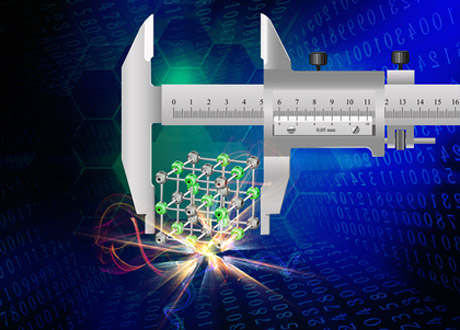By: Leif Denti
Many activities in organizations that are considered innovative risk being missed if we solely use the standard toolkit to measure innovation. In this article we will look at three types of scales that measure intangible aspects of innovation that are easily added to the toolkit of any organization.
In part one of this two part series on how to measure innovation in organizations we examined the most commonly used innovation indicators including their strengths and drawbacks. The main advantage of these indicators is that they measure tangible innovation outcomes such as new offerings or improvements in processes and methods.
What is dark innovation?
However, what traditional indicators of innovation don’t measure are those activities and phenomena that are considered to contribute to the innovativeness of an organization, but that are inherently intangible. Martin (2012) terms these actives ‘dark innovation’ since they risk being overlooked by traditional indicators. For example, all R&D work seldom leads to patents or new products. Still, we know that this kind of work must be done so that relevant mistakes and discoveries can be made, which in turn may turn into tangible innovation outcomes.
Example 1: Climate
Let’s take climate as an example. A creative climate is held to be highly conducive to innovation since ideas and information can more easily be shared (Hunter, Bedell, & Mumford, 2007). A climate is basically a set of norms – or social rules – that govern what people are allowed to do, say, and sometimes, to think. The concept is highly abstract. We can’t see climate anywhere – it exists somewhere in our minds as a vague perception. Yet like the pioneer French sociologist Émile Durkheim put it, norms are social facts. You ultimately behave in accordance with the norm lest you will suffer real and sometimes severe consequences. Climate has consequences for innovation as well, and we can measure it using any of the established climate scales.
Also see my article on creative climate for a summary of the top six components of a creative climate.
Example 2: Innovative work behavior
At the end of the day, innovation in organizations is the work of individuals who work alone or in teams. But what do people do that lead to innovation? There have been several efforts to create taxonomies of relevant such behaviors. A recent attempt was done by De Jong (e.g., De Jong & Den Hartog, 2010) which measures the extent to which an individual (1) explores opportunities, (2) generates new ideas, (3) champions and promotes new ideas, and (4) implements new ideas. When measuring innovative work behavior we typically ask team leaders, supervisors, or peers.
Example 3: Subjective assessments of innovativeness
Sometimes we want to capture the innovativeness of a team or an organization in its broadest sense. We can then use any of the scales that are designed to measure innovation using individuals’ subjective experience. Team members or managers typically assess the extent to which (1) Resources are available in the organization/team, (2) Innovation is encouraged by supervisors/management, (3) Ideas are readily implemented, (4) Risk taking and failure is accepted, and 5) Employees are empowered and given sufficient autonomy.
Are these measures related to tangible innovation outcomes?
Organizational scholars seem to make a fundamental assumption about intangible phenomena such as climate in that they ultimately lead to innovation outcomes such as new products or financial figures (covered in part 1). However, the evidence is scarce as only a handful of measures have been shown to relate to these outcomes. Table 1 lists examples of studies that have been conducted, as well as their convergent validity with other innovation indicators.
|
Measure |
Example study |
Vantage point |
Convergent validity |
|
Innovative work behavior |
Scott & Bruce (1994) |
Managers |
Significant correlation with number of invention disclosures |
|
|
Rank et al. (2009) |
Managers |
Significant correlation with number and effectiveness of implemented innovations |
|
Team innovativeness |
Hurley & Hult (1998) |
Team members |
No correlation with number of ideas adopted by the organization |
|
Business unit innovativeness |
Jansen, Van Den Bosch, & Volberda (2006) |
Managers |
Significantly correlated with measures of financial performance |
|
Organizational innovation |
García-Morales et al. (2008) |
CEOs |
Significant correlation with innovation index 1. New products, 2. new markets entered, 3. total R&D spending, 4. number of employees in R&D |
Example from my research
In the research that will constitute my doctoral thesis we measure innovation using two strategies; indicators of innovation outcomes as well as subjective assessments of team members’ innovative work behaviors.
We gathered these measures from the bottom three levels of six organizations; team members, supervisors, and department managers. We collected the following indicators: (1) number of new products or product improvements, (2) patents and patent applications, (3) scientific publications, and (4) other publications such as white papers, manuals and so forth. These indicators formed an index which positively correlated with subjective assessments of individuals’ and teams’ innovative behaviors (developed by Scott & Bruce, 1994) provided by supervisors and department managers.
Thus, the method of using indicators such as the number of new products or product improvements in combination with subjective assessments covers outcomes of innovation as well as the more elusive nature of ‘dark innovation’.
By Leif Denti
About the author
 Leif Denti is pursuing his doctoral degree of Psychology at the University of Gothenburg, Department of Psychology. His main research venue is how project leaders stimulate creativity and innovation in their project teams (project name: Management for Sweden). Leif Denti also works as a consultant at Prospero Technology Management. Leif Denti holds a licentiate degree in Psychology at the University of Gothenburg.
Leif Denti is pursuing his doctoral degree of Psychology at the University of Gothenburg, Department of Psychology. His main research venue is how project leaders stimulate creativity and innovation in their project teams (project name: Management for Sweden). Leif Denti also works as a consultant at Prospero Technology Management. Leif Denti holds a licentiate degree in Psychology at the University of Gothenburg.
References
De Jong, J., & den Hartog, D. (2010). Measuring innovative work behavior. Creativity and Innovation Management, 19, 23-36.
García-Morales, V. J., Mathías-Reche, F., & Hurtado-Torres, N. (2008). Influence of transformational leadership on organizational innovation and performance depending on the level of organizational learning in the pharmaceutical sector. Journal of Organizational Change Management, 21, 188–212.
Hunter, S. T., Bedell, K. E., & Mumford, M. D. (2007). Climate for creativity: A quantitative review. Creativity Research Journal, 19, 69–90.
Hurley, R. F., & Hult, T. M. (1998). Innovation, market orientation, and organizational learning: An integration and empirical examination. Journal of Marketing, 62, 42-54.
Jansen, J. J. P., Van Den Bosch, F. A. J., & Volberda, H. W. (2006). Exploratory innovation, exploitative innovation, and performance: Effects of organizational antecedents and environmental moderators. Management Science, 52, 1661-1674.
Martin, B. R. (2012). Innovation studies: Challenging the boundaries. Sussex: Science and Technology Policy Research, University of Sussex
Rank, J., Nelson, N. E., Allen, T. D., & Xu, X. (2009). Leadership predictors of innovation and task performance: Subordinates’ self-esteem and self-presentation as moderators. Journal of Occupational and Organizational Psychology, 82, 465–489.
Scott, S. G., & Bruce, R. A. (1994). Determinants of innovative behavior: A path model of individual innovation in the workplace. Academy of Management, 37, 580–607.
Photo: Scientific innovative research from Shutterstock.com

